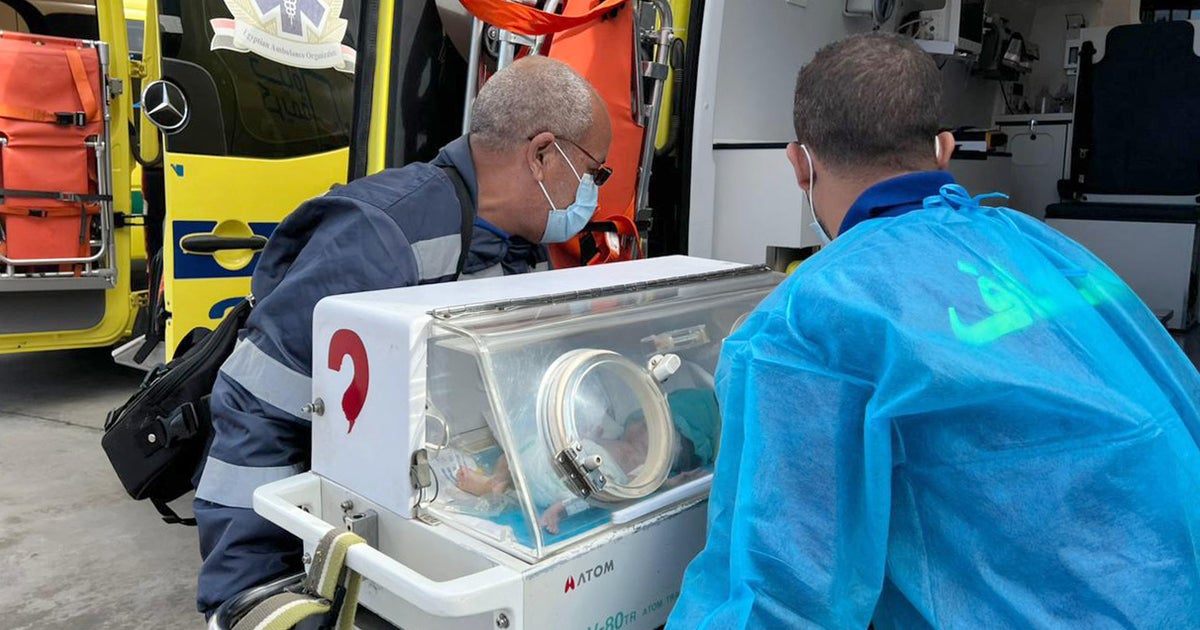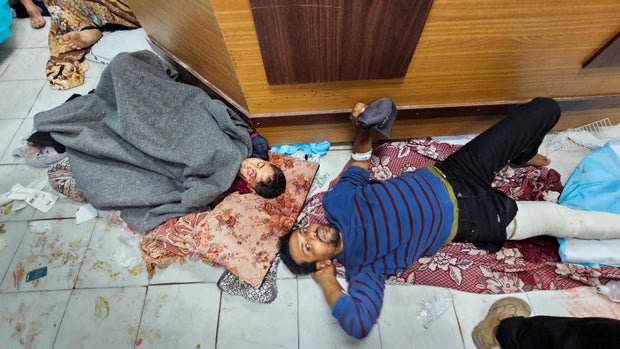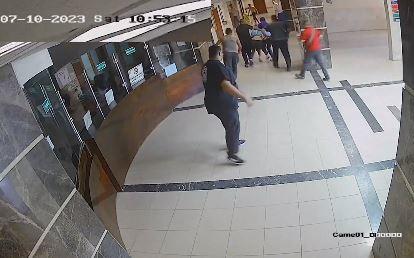Tel Aviv — The Gaza Strip’s Hamas-run Health Ministry says 13,000 people have been killed in the Palestinian territory since Israel launched its military campaign against Hamas in response to the group’s bloody Oct. 7 terror attack. There were reports Monday morning that Israeli forces were surrounding a hospital in the decimated northern half of the enclave amid airstrikes in the area, with the health ministry saying almost 3,000 people were sheltering inside the facility.
The health ministry said an Israeli shell struck the second floor of the hospital, killing at least 12 people, and a medical worker inside the facility, Marwan Abdallah, told the French news agency AFP in a phone interview — with gunfire audible in the background — that Israeli tanks had come within 200 yards of the hospital and military snipers could be seen on top of nearby buildings.
A spokesperson for the Hamas-run Health Ministry was quoted by AFP as saying about 600 patients, 200 health care workers and some 2,000 civilians displaced from their homes in the region were sheltering inside the facility.
STRINGER/REUTERS
The IDF did not immediately confirm operations around the Indonesian Hospital, but while the situation there remained unclear, there was finally hope for dozens of premature babies who had been among thousands of civilians trapped inside the Al-Shifa Hospital in Gaza City, in the central part of the territory.
The tiny babies, along with thousands of others, were evacuated from Al-Shifa starting Saturday, several days after Israeli forces moved in on the sprawling hospital compound to secure it and hunt for evidence of the Hamas command center they’ve long said was hidden underneath the facility.
AFP via Getty
Crammed into small battery-powered incubators, the newborn and premature infants were transported Sunday from Gaza City to the southern part of the strip, and Egyptian news outlets said Monday that 29 had been transported through the Rafah border crossing into Egypt for medical treatment. The World Health Organization told the Reuters news agency that 28 babies were transferred to Egypt, but three remained at a maternity hospital in southern Gaza where they were being treated for “serious infections.”
Dr. Mohammad Zaqout, a doctor at Al-Shifa, said eight of the infants brought out of the hospital — which the World Health Organization described as a “death zone” after weeks caught in the middle of the Israel-Hamas war — did not survive the desperate conditions at the facility before they could be transferred.
He said the infants had suffered from symptoms including gastritis and dehydration with vomiting and diarrhea, sepsis due to a lack of medication, and hypothermia as fuel shortages meant the hospital’s incubators could not function in the days before the transfers were facilitated.
The Israel Defense Forces (IDF), backed up by the U.S. government, had long said that Gaza’s largest hospital was serving as a command center for Hamas. On Sunday, the IDF released more video as evidence of that alleged base, including images of a “fortified tunnel” that it said ran 180 feet underneath the complex at a depth of more than 30 feet.
The IDF also shared new details about the death of one of its own, 19-year-old soldier Noa Marciano, who was found dead Friday after being taken hostage by Hamas during its Oct. 7 terror blitz across southern Israel.
“Hamas murdered Noa inside Shifa Hospital,” senior IDF spokesperson Daniel Hagari said over the weekend.
The military released a new video clip, meanwhile, from a security camera at Al-Shifa, that it said shows Hamas militants forcing two other hostages into the hospital on Oct. 7. The whereabouts of those two individuals remained unknown Monday.
IDF handout
Forty-five days since Hamas — long designated a terror group by Israel, the U.S. and most of Europe — drew Israel’s blistering military response by killing some 1,200 people with its surprise attack, thousands of Palestinians, including injured and critically ill patients, were still trying to flee to southern Gaza Monday by whatever means they can.
Paghad Abu Assy, 11, was among those who have made the journey. She said half her friends had been killed, but she still dreamed of a future when, “the war will end, and I can become a doctor and finish my education.”





